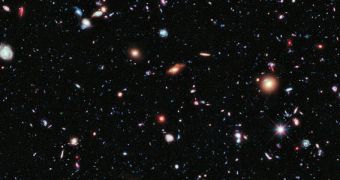A team of astrophysicists at the University of Nottingham in the United Kingdom announce that they will soon use one of the twenty most powerful supercomputers in the world to conduct an in-depth simulation of what went on in the early Universe. Scientists believe that this may allow us a deeper understanding of the mysterious processes that shaped the Cosmos for billions of years to come.
The group will have to travel to the Très Grand Centre de Calcul du CEA, near Paris, in France, to access the Curie supercomputer. The machine features 92,000 computer units, and offers scientists 2 petaflops (2 million billion operations per second) of pure computing power. Overall, the simulation has been awarded 15 million core hours, distributed over all the cores in Curie.
The investigations team is led by Dr. James Bolton and Dr. Frazer Pearce, both of whom are based at the Nottingham School of Physics and Astronomy. They lead an international team of European academics that won this grant through the Partnership for Advanced Computing in Europe (PRACE).
During the study, Curie will model and analyze new data on quasi-stellar radio sources (the powerful supermassive black holes at the core of active galactic nuclei), dark matter, and the extremely complex interplays that most likely occurred between galaxies and free gas when the Universe was just an insignificant fraction of its current age.

 14 DAY TRIAL //
14 DAY TRIAL //